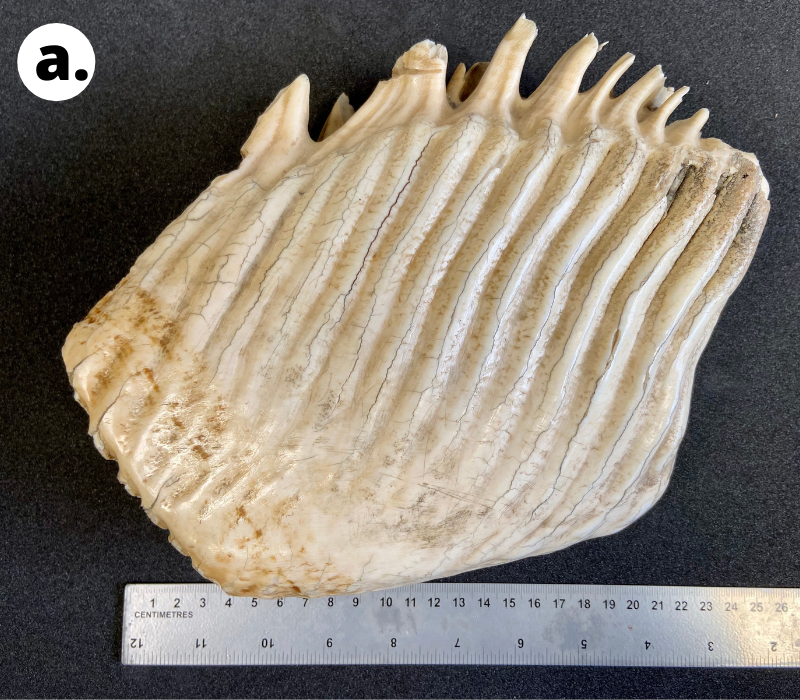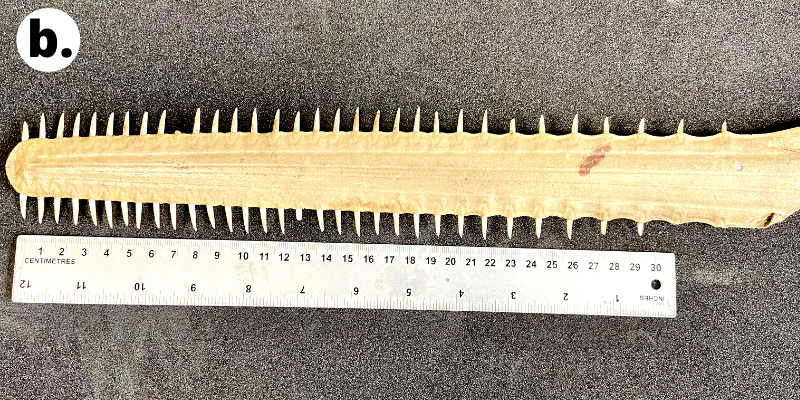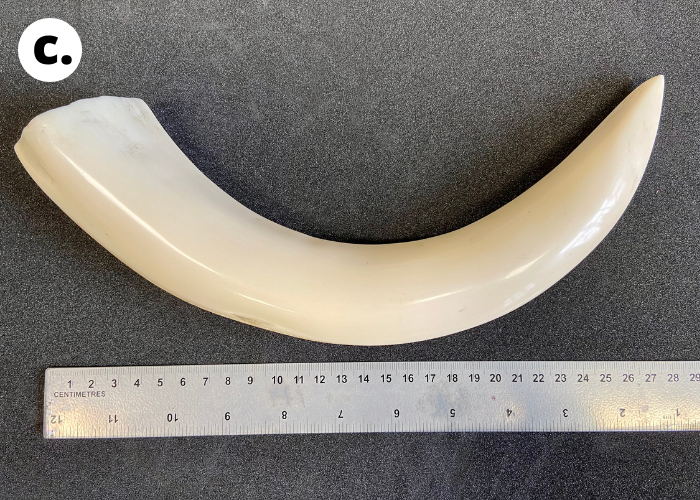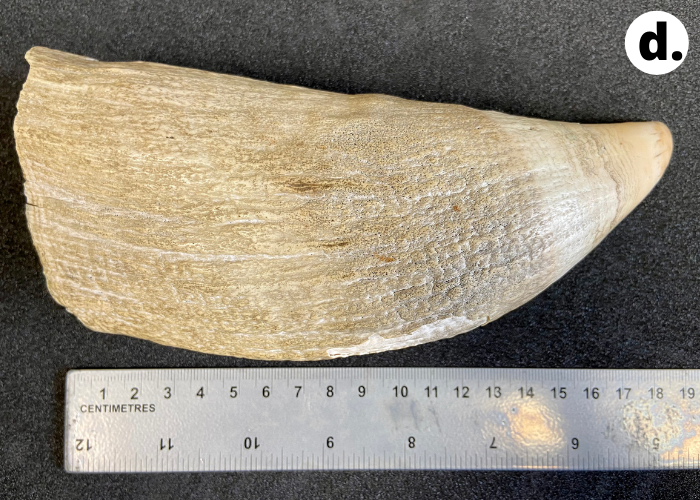Teeth in the animal kingdom come in lots of shapes and sizes. At SEARCH, Hampshire Cultural Trust’s centre for hands-on learning in Gosport, the natural science collection is home to some amazing animal teeth from across the world.
Have a look at the photographs below. Which animals do you think these teeth belonged to? The shape of each tooth may provide you with some clues as to what sort of food it is adapted to eat. Is it a tooth for chewing? Or maybe for slicing or tearing? What about the size – could this tell you anything about the animal it came from?
Once you’ve had a look, check out the answers below!




Answers
a. An elephant’s molar tooth
In addition to their tusks, elephants have a set of four large molar teeth inside their mouth. The ridged surfaces of these teeth grind up plant matter like fruits, bark and grasses. An elephant can go through six sets of molar teeth during its lifetime – when they get to their last set, they have to make them last!
b. A sawfish rostrum
Sawfish are a type of ray, and get their name from the long, flat rostrum, lined with rows of sharp teeth, that extends from their nose. The saw has a dual function. It is covered with tiny pores that detect electric signals from prey, including fish and crustaceans. Once located, the saw is used to slash at prey before it is eaten.
c. A hippo’s tusk
Hippos have ivory tusks, although unlike elephants, these are located inside their mouths. The long pointed shape makes them look like they’d be suited to a meaty diet, however, these teeth are actually used for fighting. Hippos are herbivores and mainly eat grasses. In addition to their tusks, they have a set of molars in their mouth which help them chew and digest what they eat.
d. A sperm whale tooth
Sperm whales have 18-26 teeth on each side of their lower jaw, but none visible in the upper. Each cone-shaped tooth can weigh up to a kilogram. Their preferred food is squid and a lot of what is known about huge, deep water squid has been based on the contents of sperm whale stomachs! Sometimes prey is swallowed whole and the teeth aren’t used at all.
If you have enjoyed Culture on Call and you are able to make a donation, please click the link below. Any support you can give will help us keep communities connected to culture in these difficult times.





